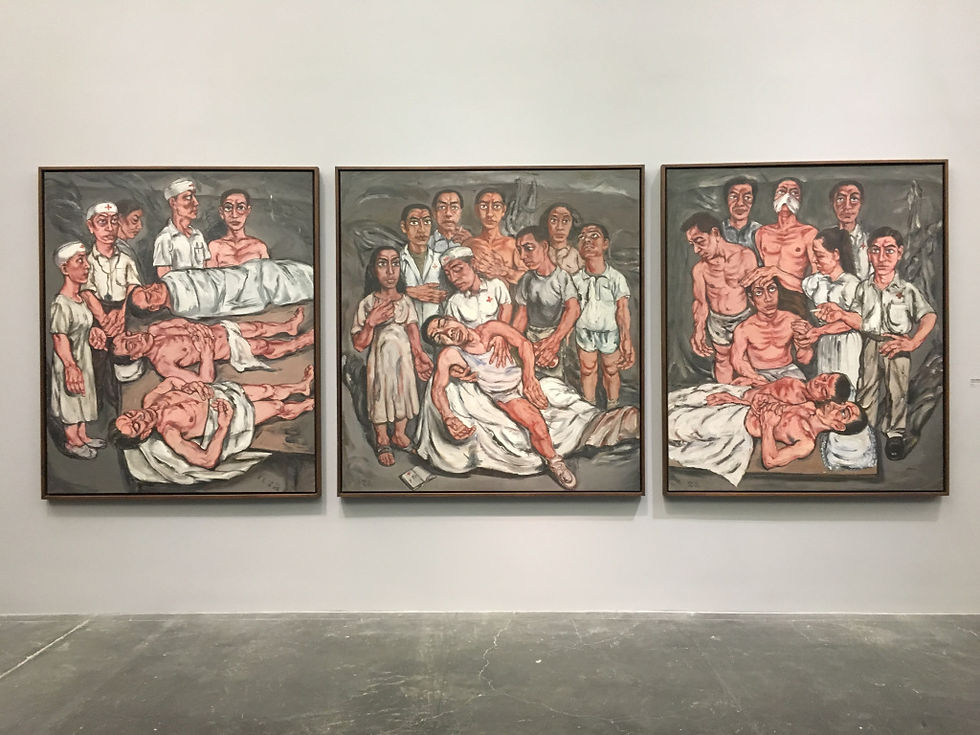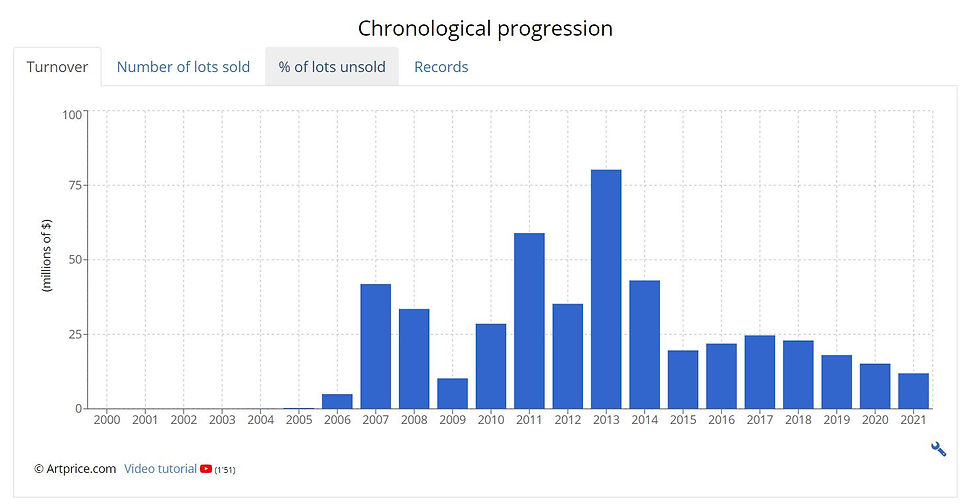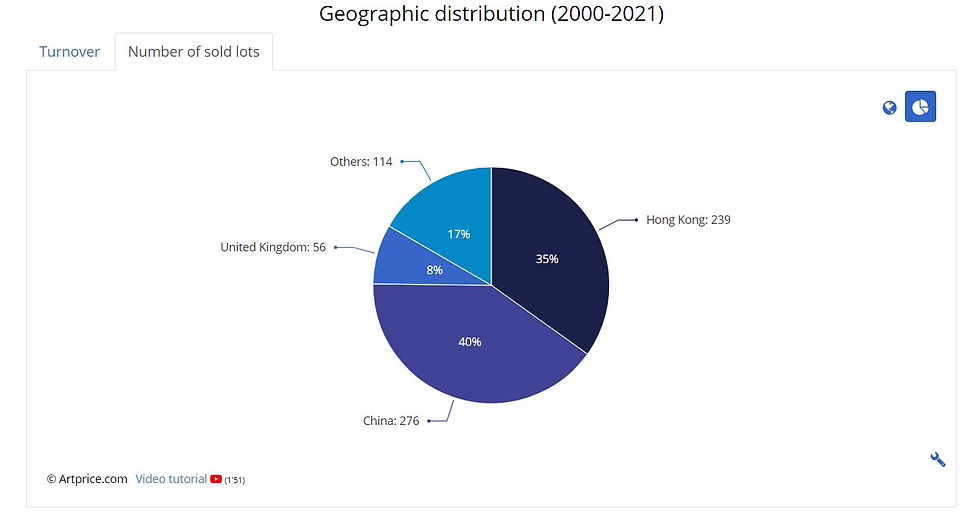Art Index: Fanzhi Zeng
Fanzhi Zeng is a contemporary Chinese artist based in Beijing. From the earliest stages of his career, his paintings have been marked by their emotional directness, the artist's intuitive psychological sense, and his carefully calibrated expressionistic technique. Moving to Beijing in the early 1990s, Zeng's art displayed an immediate shift, responding to his immersion in a more superficial environment, his seminal Mask series displaying the tensions between the artist's dominant existential concerns and an ironic treatment of the pomposity and posturing inherent to his new contemporary urban life. Throughout, Zeng's expressionistic techniques run counter to such techniques' conventional usage. That is, Zeng's representation of raw, exposed flesh or awkwardly oversized hands is not an attempt at pure emotional expression, but instead play against the superficially composed appearances of his subjects, an ironic treatment of emotional performance as a metaphor for a lost self, of stunted self-realization.
Zeng was in Hubei Institute of Fine Arts from 1987 to 1991, and paid a particular interest in German expressionist painters. During his third year of schooling, he began instead to learn more about the actual approaches that the expressionists would take to painting. By the time his first show came to fruition, it was apparent that he had gained his very own style and the work gained him a large amount of respect in the Chinese art scene.
From the start, Zeng has been heavily influenced by his physical and emotional circumstances. Zeng's first mature series was his "Hospital Series", inspired by the scenes he witnessed in the local clinic near where he lived. At the same time, as an art student, Zeng studied German Expressionism, and the preponderance of social upheaval and intensely felt emotion, against a backdrop of social upheaval, had resonance in his own life. In his Hospital series, Zeng moved to a theme that included the use of hospital interiors, where he devoted much of the detail to the patients' moods and the power that certain brush stroking techniques could yield. These paintings often hinted at a sadomasochistic relationship in the world with his pale colors and blood colored flesh of the patients. In using these techniques, he shows a somewhat pessimistic view of the world.His expressionist technique shined through in these works further with an extreme expression in the eyes of the characters. Also, the hands of the patients are notably oversized and the joints are much larger as well. The scenes he depicts seem to show patients caught up in seeming hysteria, and the deep red colors show anger of sorts.

Zeng Fanzhi, Hospital Triptych No. 2, 1992 Copyright by Airyclairy
After 1994, Zeng's work shifted toward his Mask series in which his style takes a drastic shift that is considered the second period in his work. Instead of the anger and brutal nature of the hospital series, the Mask series is more apathetic. The scenes are painted from a distance, and have a mask of some sort as the center of focus. The groups are often small or include a single person, and that seems to show that Zeng is touching on personal relationships and the fact that society is filled with false relationships.By using a mask, even if a person is with a group, there is a sense of solitude for the person wearing the mask. He also explores new techniques that include using a palette knife as a paintbrush. This causes the characters to have an even more blurred edge to them, which essentially masks the painting as a whole. The lighting on the paintings are not coming from an obvious source, and the characters seem to be separated from the world around them through an awkward placement in the background.Through the different techniques, the characters seem much more calm than his earlier hospital series. The figures' hands are in fists and also much more realistic and apparent than in the past, and this causes them to seem as though they are controlling an emotion instead of venting anger, etc.

Contemporary artist Zeng Fanzhi's Mask Series 1996 NO.6 was sold at record price of 161 million yuan (24,885 million $) [Photo provided to China Daily]
The art by Zeng after 1997 becomes much more stylish through the incorporation of new types of backgrounds like the sea. He uses softer colors that are more blended into each other and this makes for a more comfortable viewing experience. Rather than anger or a controlled emotion, these figures are more relaxed and their hands are sometimes in their pockets. This seems to show that the artist's mood at the time is also more relaxed and has an understanding of life. What was once angry and bold has become more calm through different brush strokes, but there is still a sort of anxiety that can be noted by the fact that the characters have larger-than-normal heads. Rather than his expressionist beginnings, his work now seems to consist largely of symbolism.
Auction Results
According to Artprice.net, $100 invested in a work by ZENG Fanzhi in 2006 would be worth an average of $1,875 (+ 1775%) in July 2021, with a price evolution in 2020 of 3,8%, and 32 lots sold (worthing 15 million dollars), with a graphic distribution in the past ten years principally in Hong Kong (59,7%).

Chronological progression

Geographic distribution
Sources:
https://en.wikipedia.org/wiki/Zeng_Fanzhi
https://www.artprice.com/artist/144897/fanzhi-zeng/index


Comments